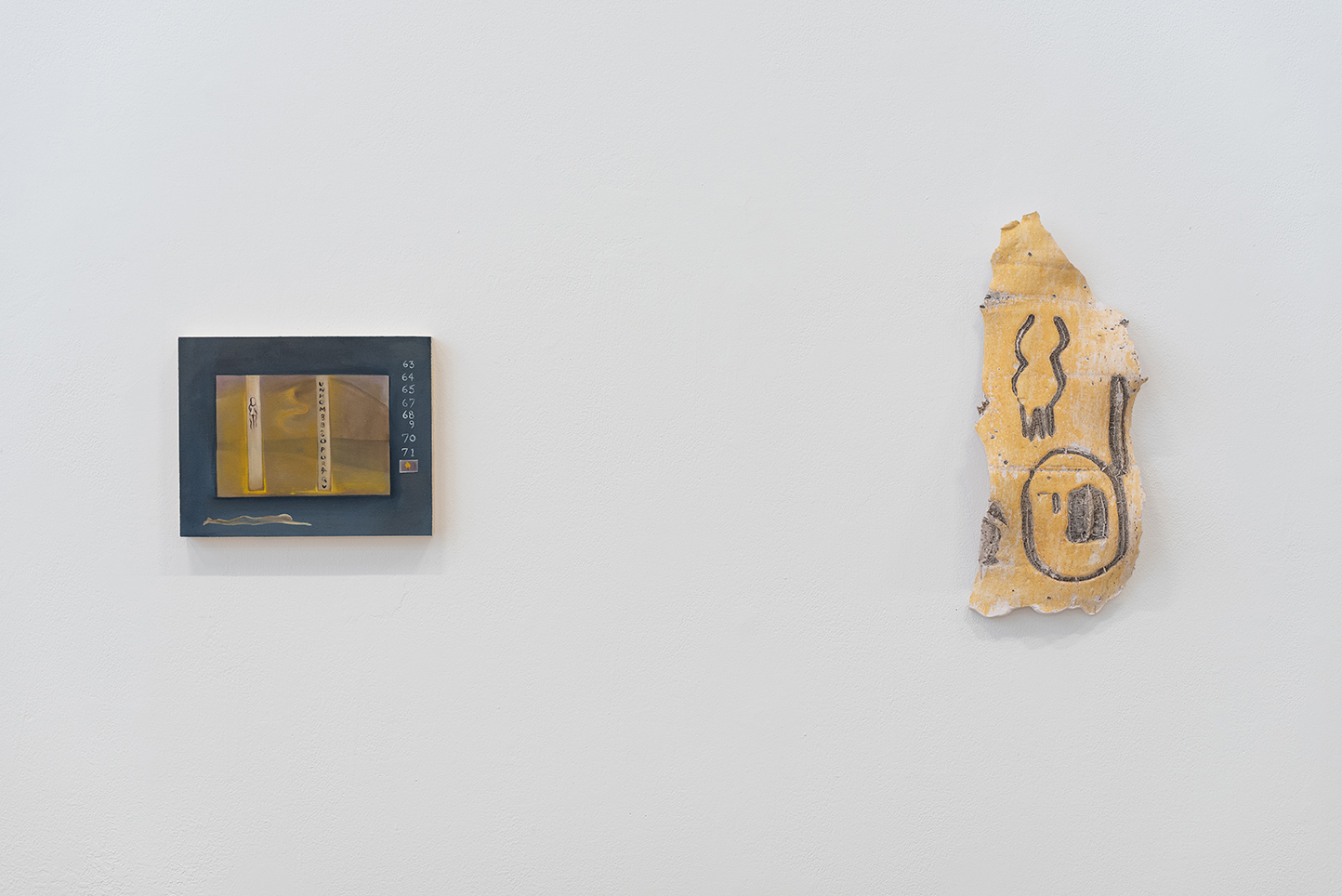Patricia Fernández
Here is My Name
November 8 - December 8, 2018
There’s a story of a Basque sheepherder Jose Sola who found a shell in Taft, CA in 1904. Just something he picked up along the 400 mile trail, which was the most walked path for sheepherders. Sola (which happens to be the feminine word of “alone” in Spanish) took this shell and transformed it with his knife. Later he buried it one foot deep, marking this site where he had spent time with his flock. In 1940 he came back to find it. It was still there.
Along the 400 mile trail aspen trees bear sheepherder’s arborglyphs. Oftentimes when paused in a grove of trees along their journey they carved into the bark pictures of what was on their minds, allowing these to communicate for them. The sheepherders became pragmatic artists in order to survive. They followed the same yearly transhumance path, and within these groves, upon several visits, handwriting becomes familiar. The trees become calendars, love letters, sites of ritual, political protests and voices into the void. Objects and arborglyphs are created as gestures against forgetting, or being forgotten.
For her exhibition at Todd Madigan Gallery, Patricia Fernández presents a group of works that trace her walks through the evidentiary space of the aspen groves and the more elusive trails that once crossed the sierras.
In the gallery a tree slab serves as a communal table, inspired by Bakersfield’s historical Basque boarding houses. On the surface traces of the mapping of arborglyphs are translated and shared. Obsidian, serpentine, pyrite, quartz and shells, all found along the trails, create symbols and markers as they are embedded into the wood. Bits of stone and shell represent the geologic history of the high sierras as well as the geography of unrooted bodies. The years of 1932 and 1933, refer to the first sightings of a female figure, mythically known as Jani, who appears smoking and clad only in a flapper hat. 1937 is the year Guernica was bombed. Never ending lists of years are engraved into the bark next to lamentations of loneliness, reminiscent of jail cell walls.
Four etched vessels, contain organic materials that relate to the paths walked: sagebrush, sheep’s hair, water and dirt offer another interpretation of the “four heads” of the Basque, or lauburu, a traditional symbol of the four elements.
A series of paintings dense with ambiguity ring the gallery in conversation with imprints of the sheepherder’s markings. The paintings are made from onsite drawings, and are interpretations of the landscape through the insistent words and pictures that mark the trees. The charged space of the grove is reconsidered here as a series of notational spaces that imperfectly record an experience bound to site.
The works in the exhibition are disparate ends of an empirical and ephemeral endeavor that is an ongoing investigation into re-presenting forgotten histories.
Special thanks to Jessica Alcala, Kevin Ayala, Naomi Carrizales, Saul Guzman, Gabriela Lopez, Liz Sherwyn, Chris Livingston, Steve Bass, Mitch Springer and Tony Velis for their help in making this exhibition possible.





































